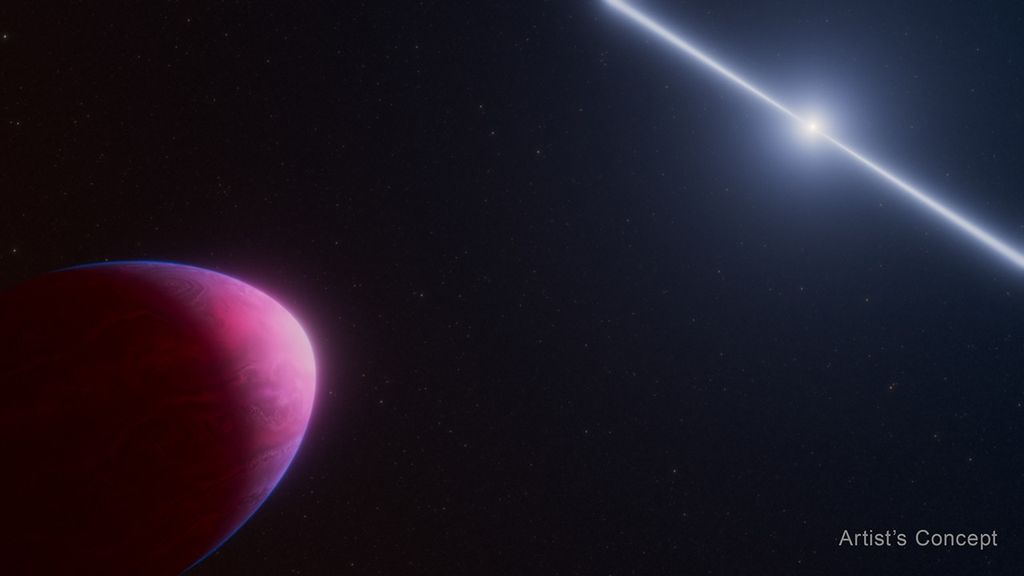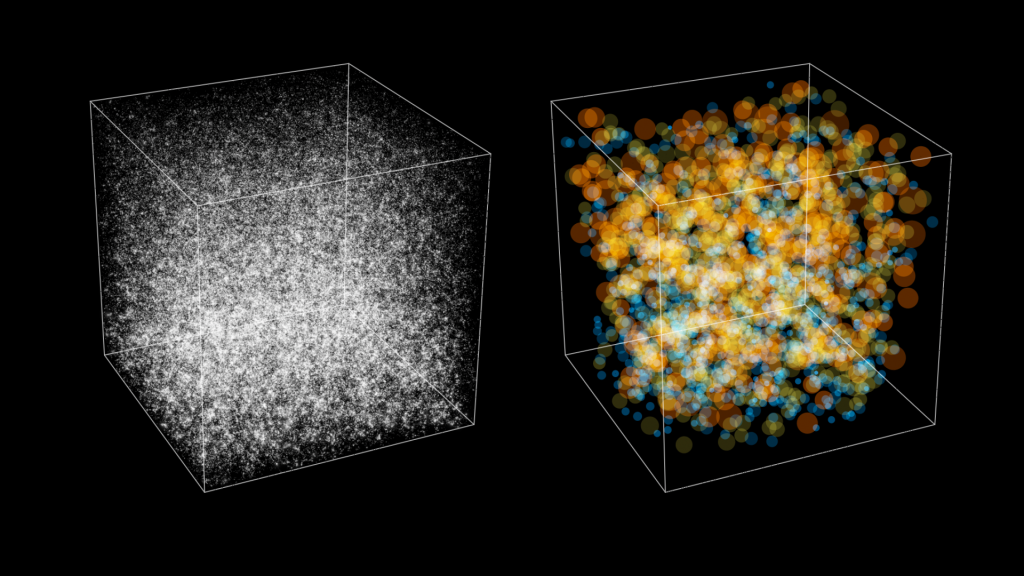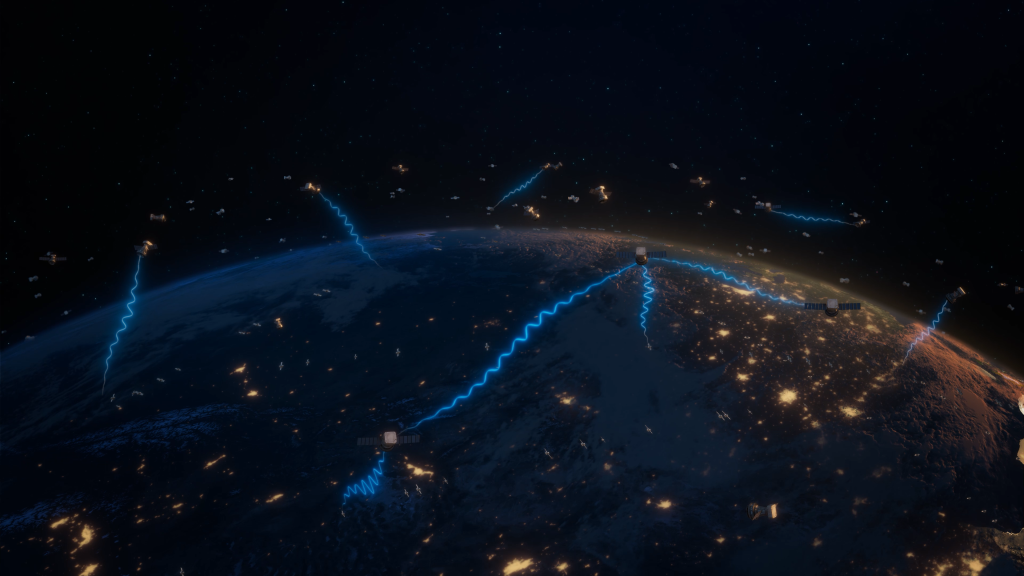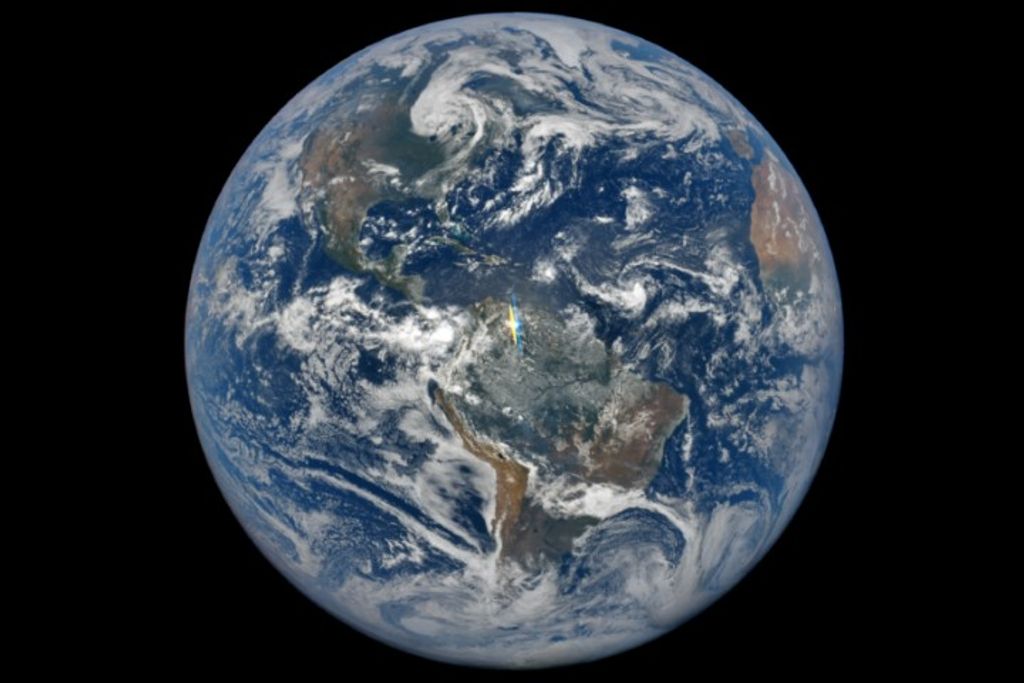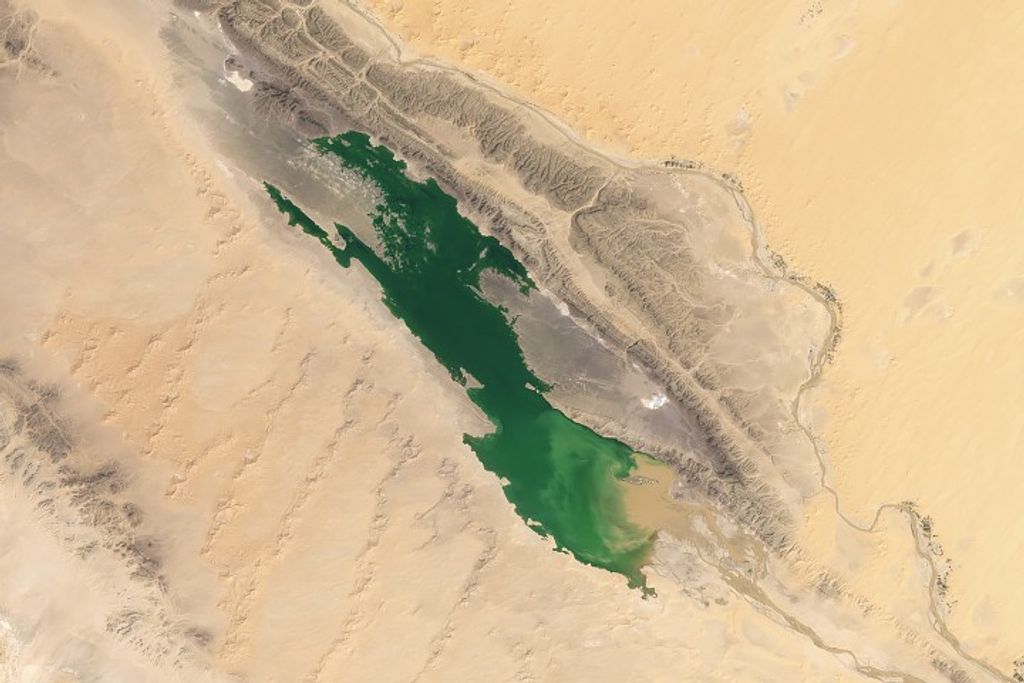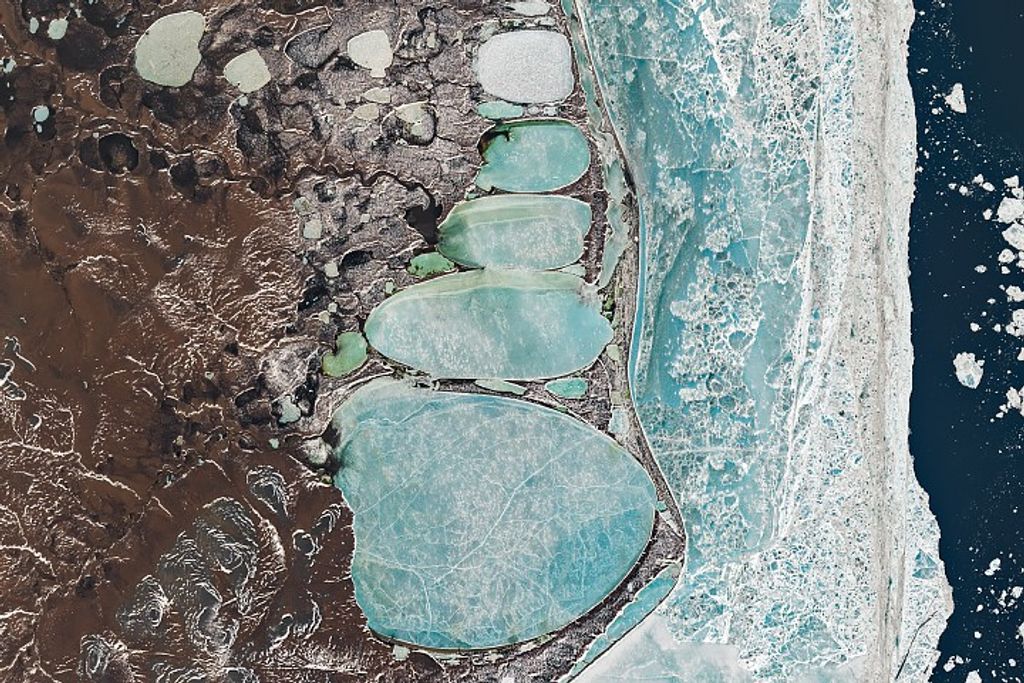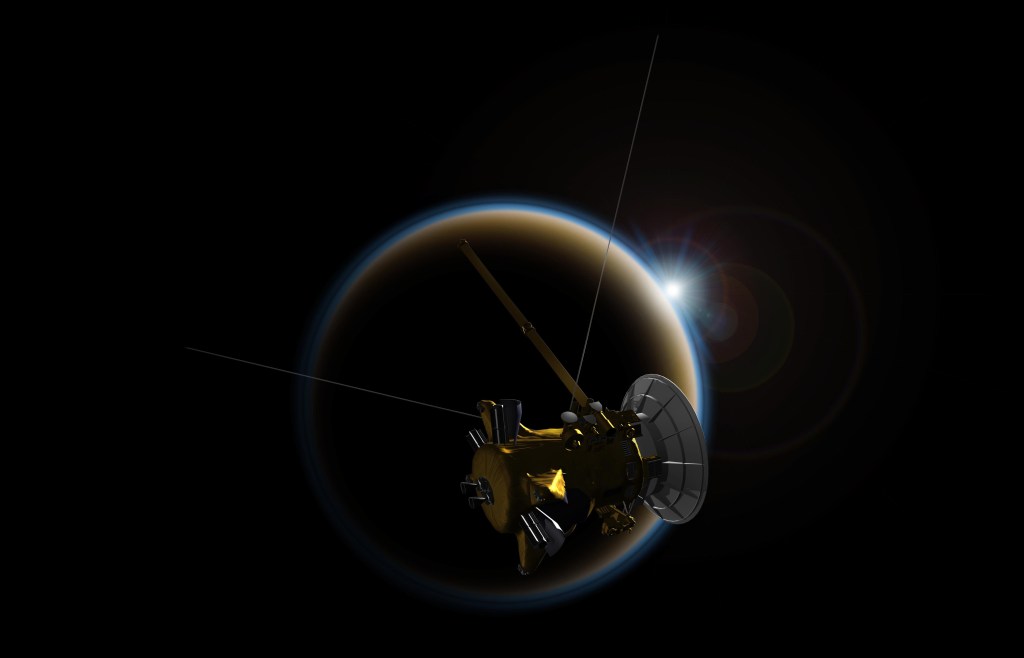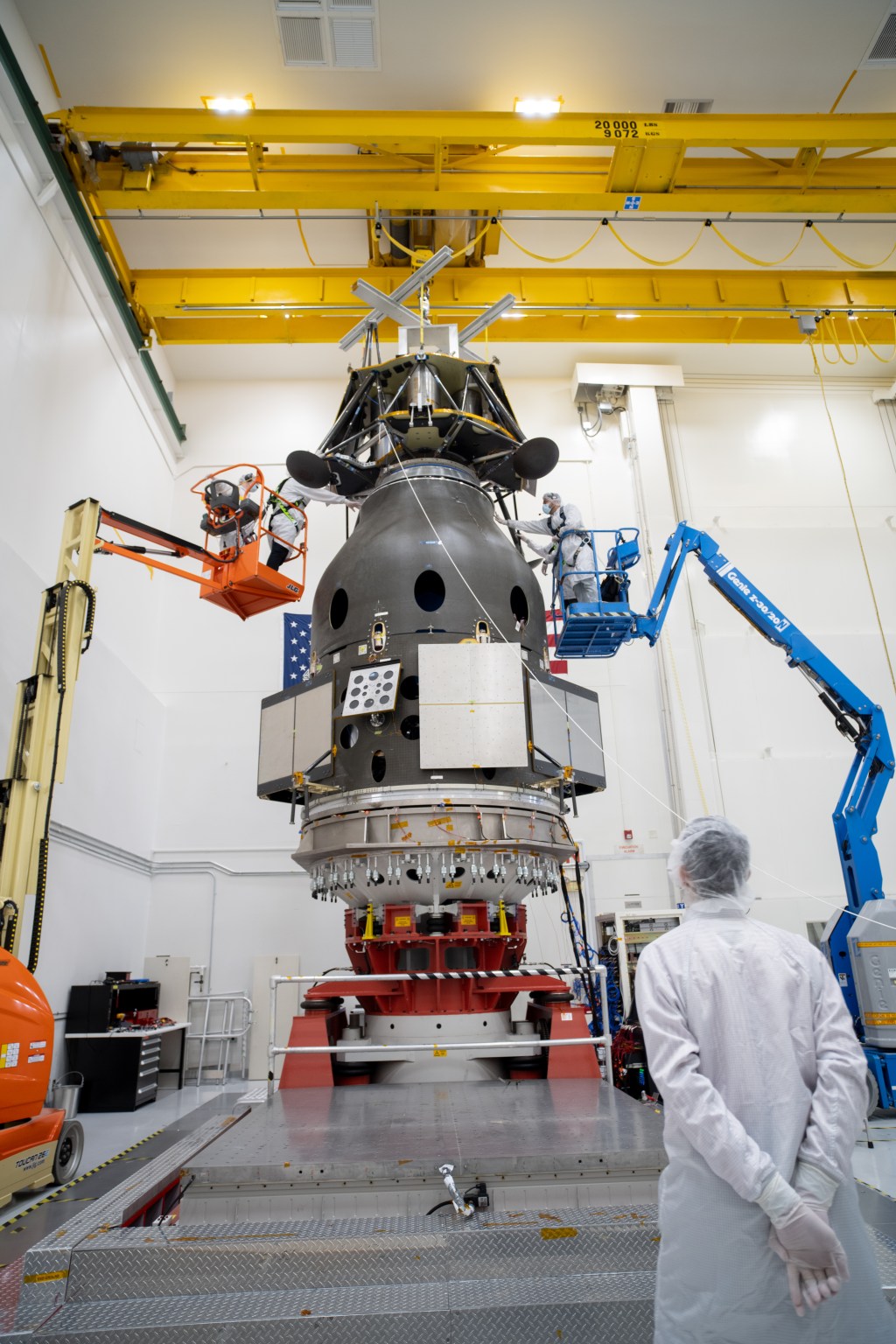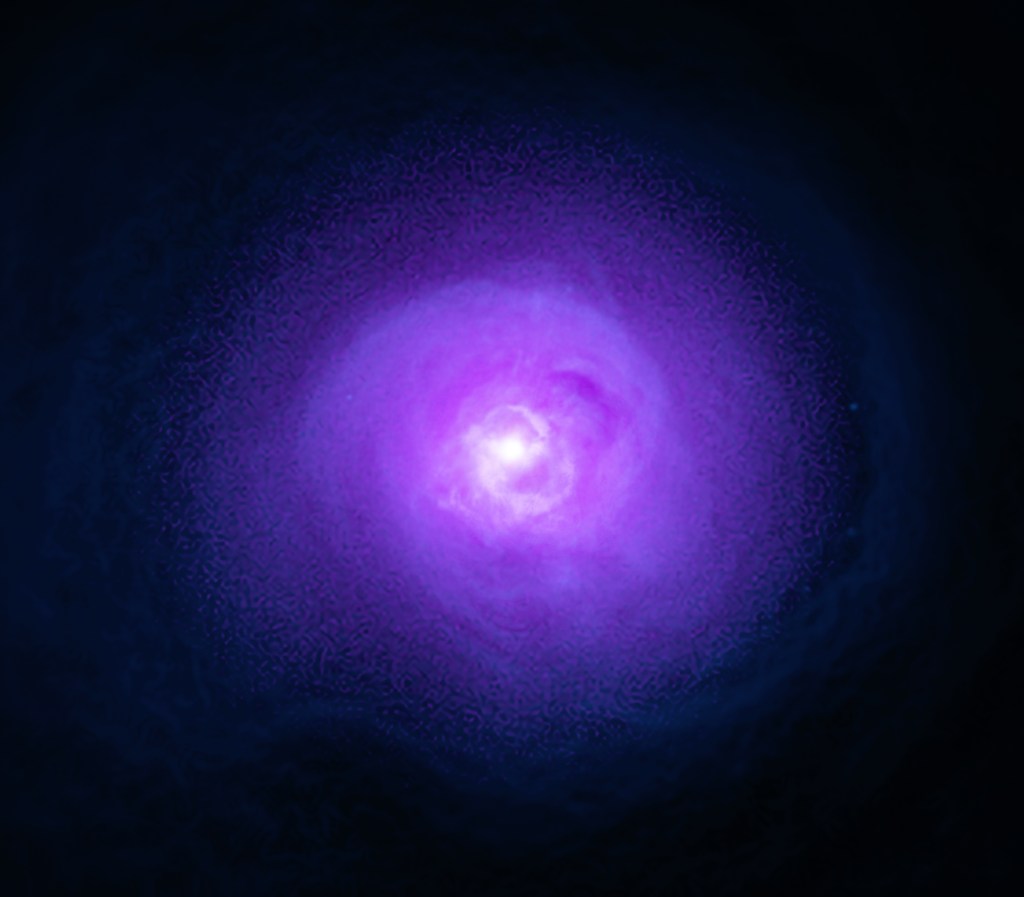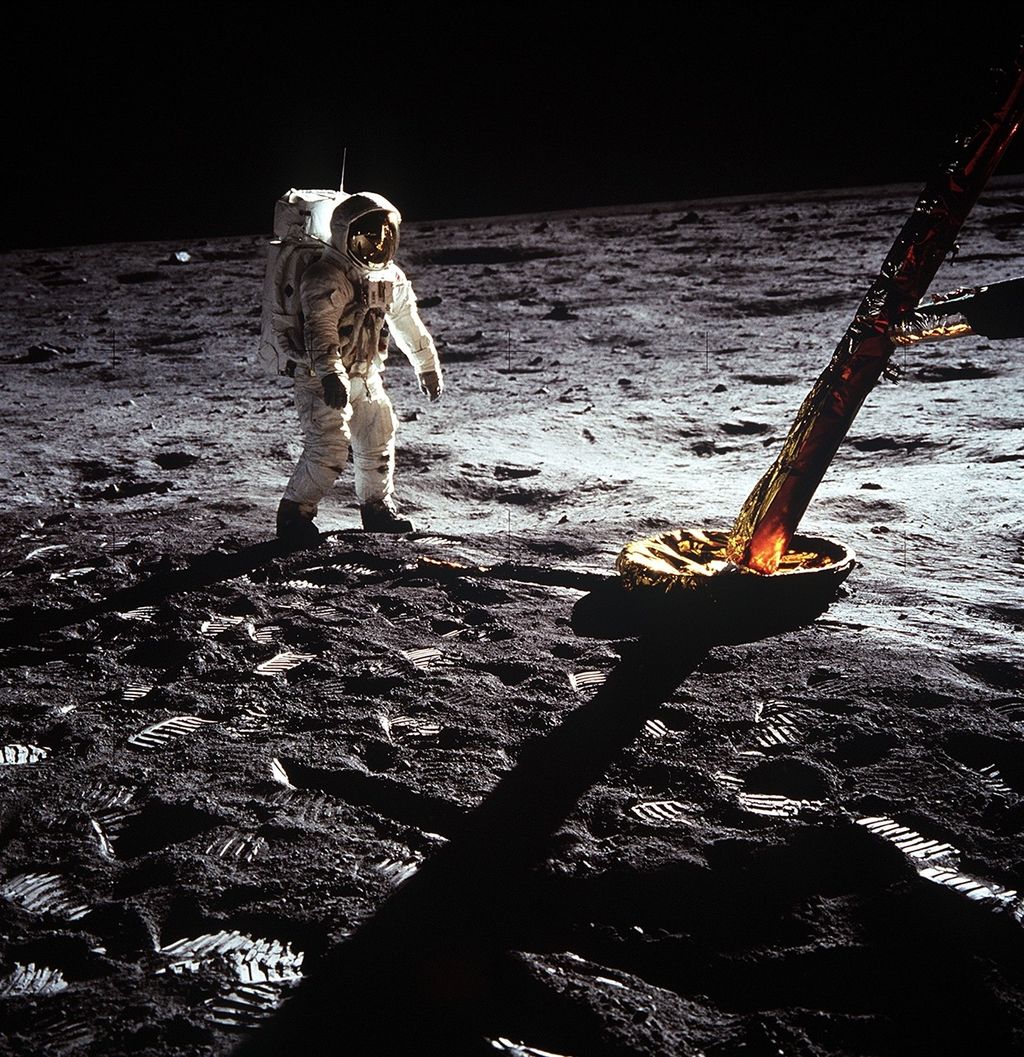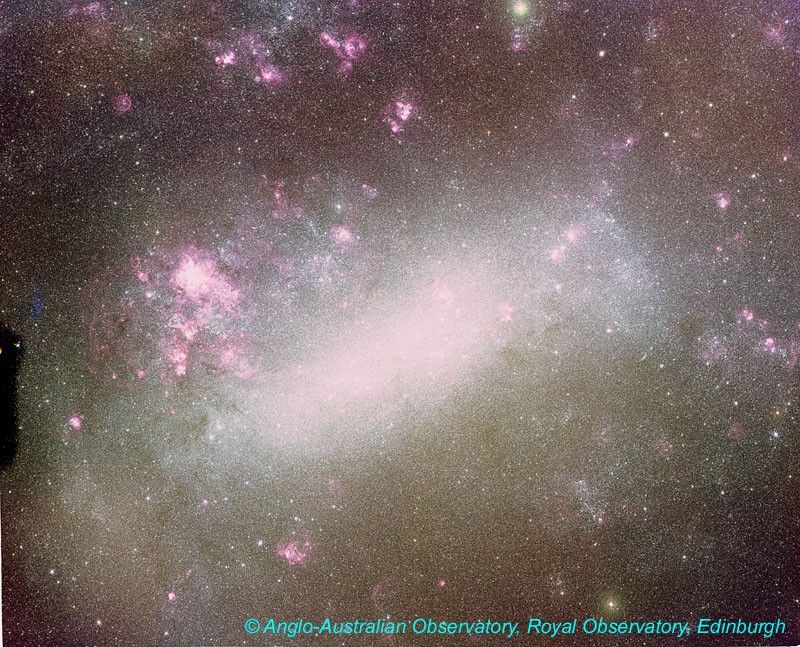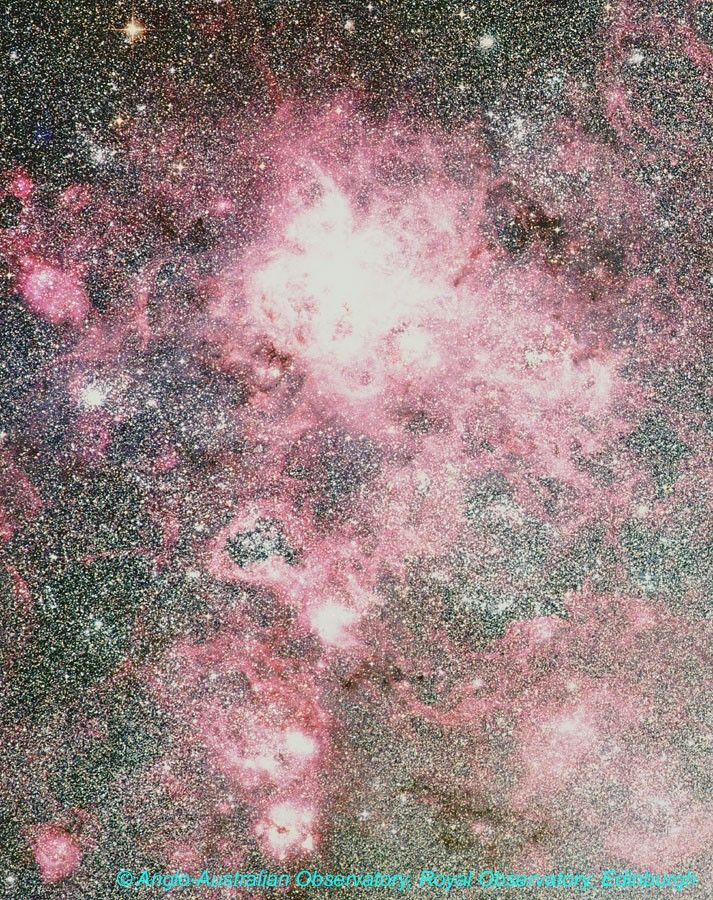1 min read
A Grand View of the Birth of “Hefty” Stars – 30 Doradus Nebula Montage
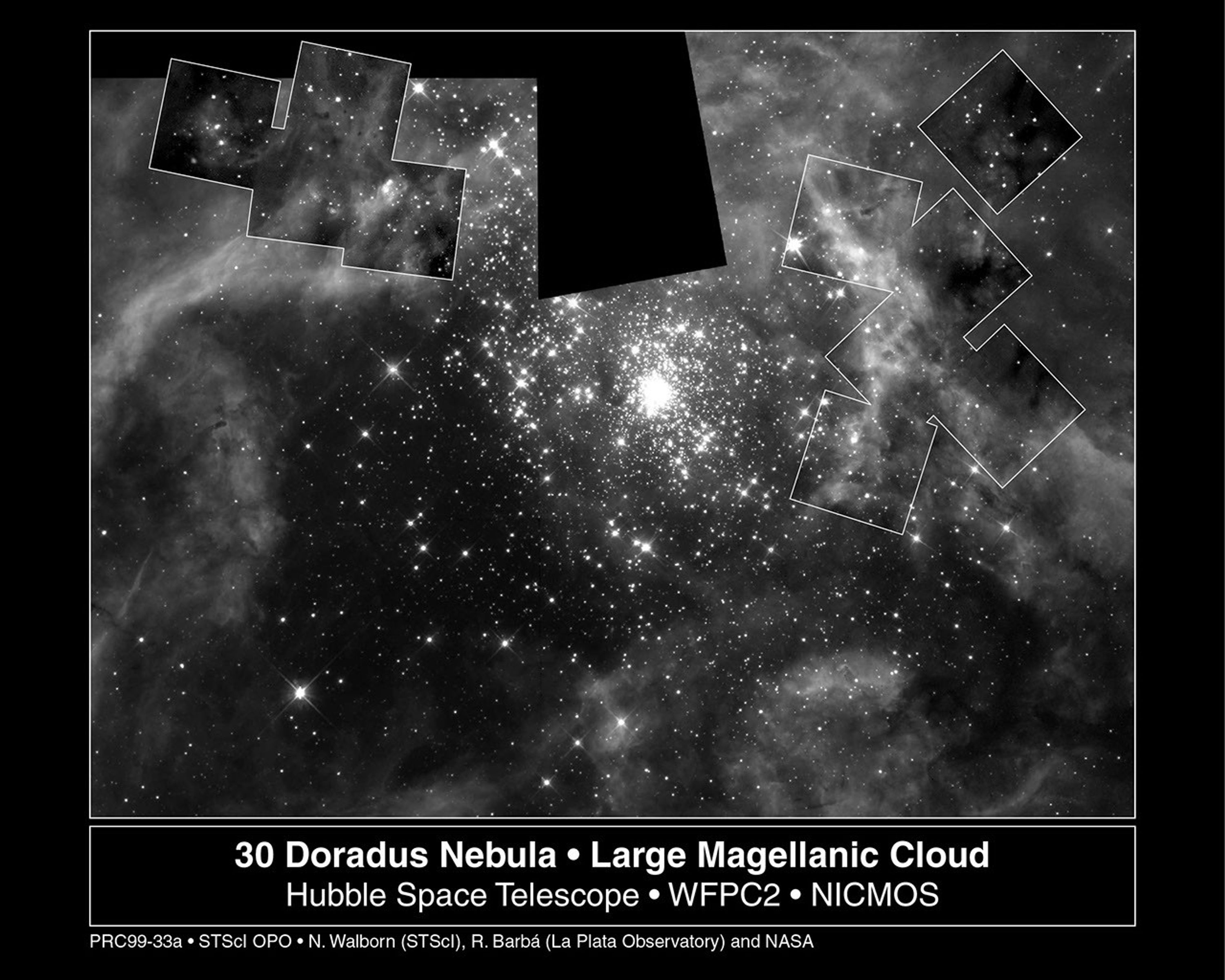
This picture, taken in visible light with the Hubble Space Telescope's Wide Field and Planetary Camera 2 (WFPC2), represents a sweeping view of the 30 Doradus Nebula. But Hubble's infrared camera - the Near Infrared Camera and Multi-Object Spectrometer (NICMOS) - has probed deeper into smaller regions of this nebula to unveil the stormy birth of massive stars. The montages of images in the upper left and upper right represent this deeper view. Each square in the montages is 15.5 light-years (19 arcseconds) across.
The brilliant cluster R136, containing dozens of very massive stars, is at the center of this image. The infrared and visible-light views reveal several dust pillars that point toward R136, some with bright stars at their tips. One of them, at left in the visible-light image, resembles a fist with an extended index finger pointing directly at R136. The energetic radiation and high-speed material emitted by the massive stars in R136 are responsible for shaping the pillars and causing the heads of some of them to collapse, forming new stars. The infrared montage at upper left is enlarged in an accompanying image.
About the Object
- R.A. PositionR.A. PositionRight ascension – analogous to longitude – is one component of an object's position.05h 38m 42.39s
- Dec. PositionDec. PositionDeclination – analogous to latitude – is one component of an object's position.-69° 6' 2.81"
- Object NameObject NameA name or catalog number that astronomers use to identify an astronomical object.30 Doradus, R136
- Release DateSeptember 29, 1999
- Science ReleaseHubble Captures a Grand View of the Birth of “Hefty” Stars
- CreditNICMOS montages: NASA/Nolan Walborn (Space Telescope Science Institute, Baltimore, Md.) and Rodolfo Barba' (La Plata Observatory, La Plata, Argentina); WFPC2 image: NASA/John Trauger (Jet Propulsion Laboratory, Pasadena, Calif.) and James Westphal (California Institute of Technology, Pasadena, Calif.)
Related Images & Videos
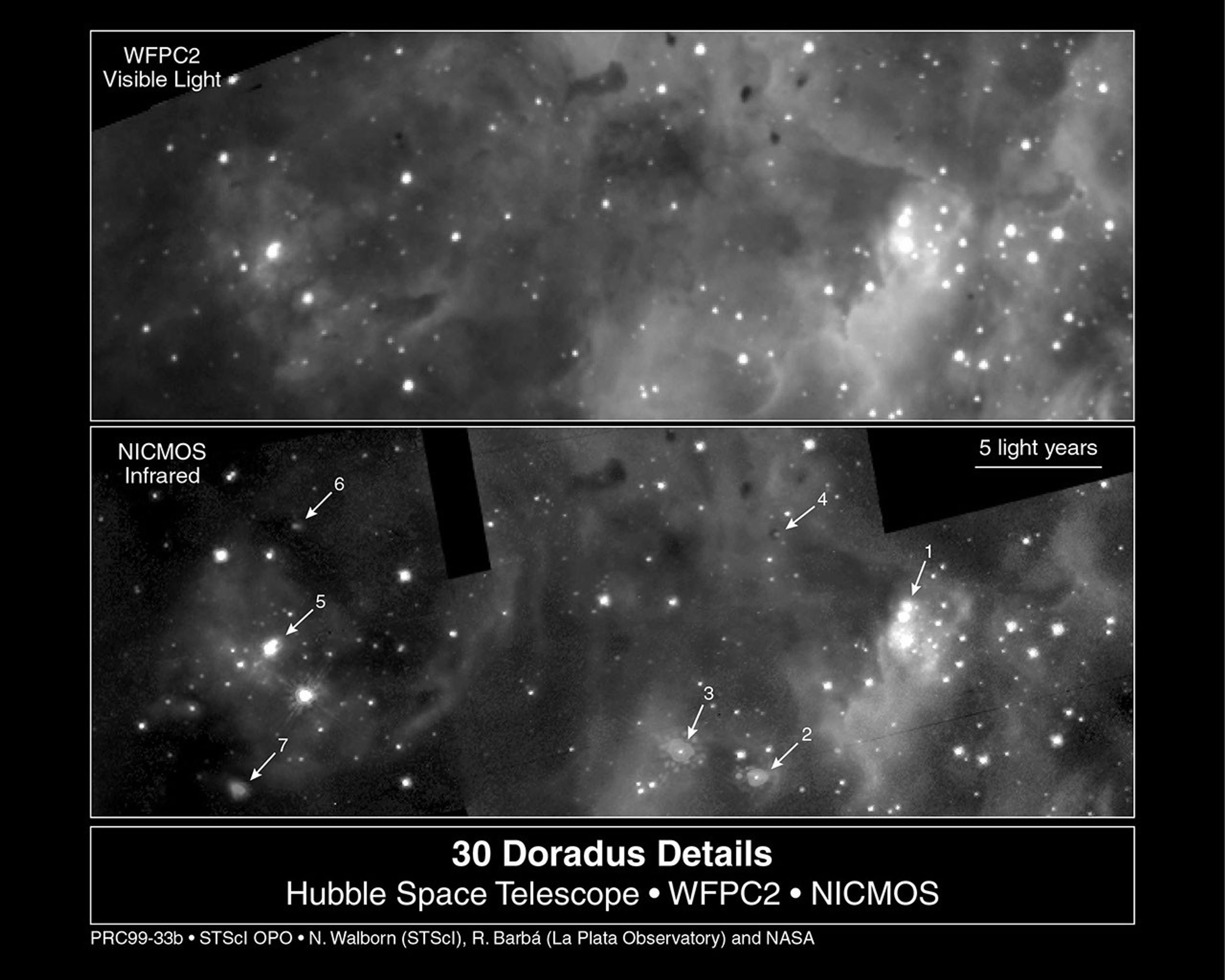
Visible and Infrared Views of Starbirth Region Near Star Cluster R136
These are two views of a highly active region of star birth located northeast of the central cluster, R136, in 30 Doradus. The orientation and scale are identical for both views. The top panel is a composite of images in two colors taken with the Hubble Space Telescope's...
Share
Details
Claire Andreoli
NASA’s Goddard Space Flight Center
Greenbelt, Maryland
claire.andreoli@nasa.gov


